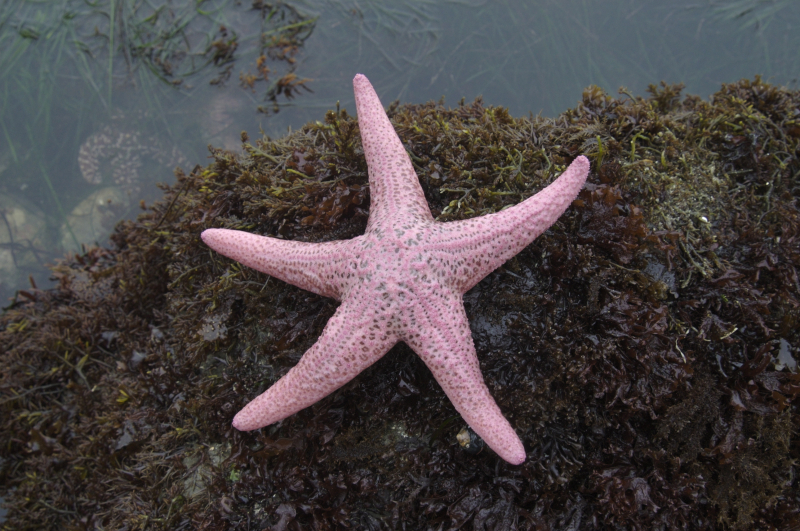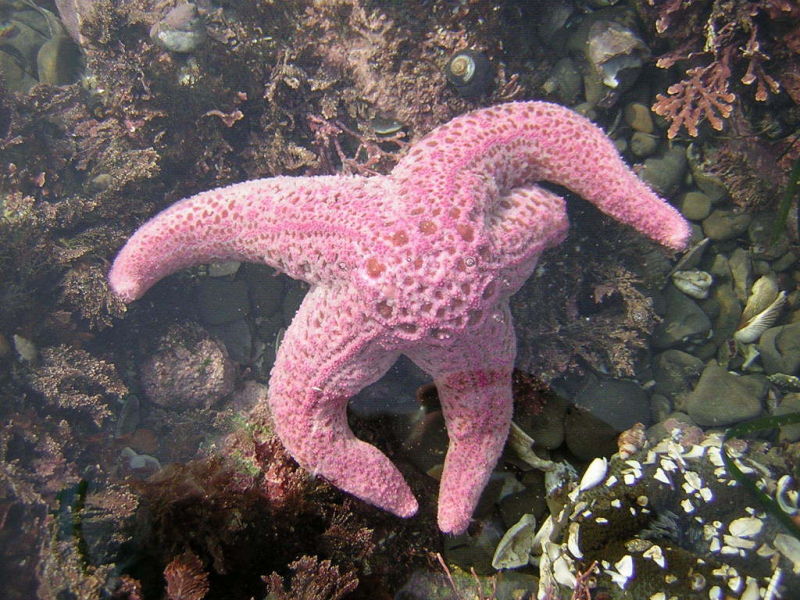Pink Sea Star
Pisaster brevispinus, commonly called the Pink Sea Star, giant pink sea star, or short-spined sea star is a species of sea star in the northeast Pacific Ocean. It was first described to science by William Stimson in 1857. The type specimen was collected on a sandy bottom, 10 fathoms (18 m) deep, near the mouth of San Francisco Bay.
The pink sea star has a sizable core disc and five thick limbs. One of the world's biggest sea stars is this one. While typically having a diameter of 320 millimetres, monsters up to 90 centimetres have been found. The heaviest creatures might weigh 4.5 kg. This star's upper, aboral surface is typically pink, occasionally with grey hints. The arms' radius ranges from 2.8 to 5.0 times that of the disc. The pink sea star is a carnivore and scavenger. Its main prey is bivalves. It hunts, captures, and eats cockles, including Nuttall's cockle, butter clams, jackknife clams, horse clams, littleneck clams, and geoduck clams. How it locates buried clams is unknown, but once it finds a buried clam it will dig down to it by using its tube feet to push bits of sediment from near its mouth to the ends of its arms. Holes as deep as 10 centimetres have been observed.












